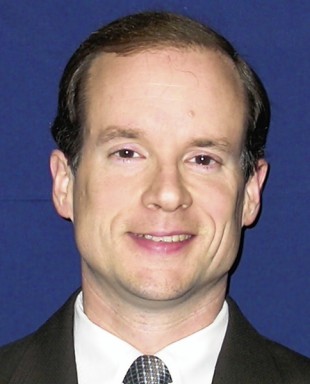Publisher's note: This article appeared on John Hood's daily column in the Carolina Journal, which, because of Author / Publisher Hood, is linked to the John Locke Foundation.
John Hood, president of the John Locke Foundation.
RALEIGH - North Carolina's economy isn't behaving the way it was supposed to.
According to liberal critics of Gov. Pat McCrory and the leadership of the General Assembly, the state should be losing its attraction as a place to do business. Our economy should be suffering from inadequate demand, thanks to state budget cuts. The passage of the marriage amendment and abortion legislation, and the refusal to assist the Obama administration in implementing its health care scheme, should be deterring out-of-state corporations from creating jobs in North Carolina or even associating themselves with the state.
There is, in fact, no evidence whatsoever that these predicted events are occurring to any measurable degree. North Carolina's economy is growing faster than the national average. By some measures, the
state's recent economic performance is among the strongest in the country.
North Carolina liberals would hardly be the first group to oversell their case and overestimate the consequences of not listening to them. In the past, for example, conservatives have sometimes predicted economic disaster from even small increases in tax rates.
Moreover, North Carolina conservatives should resist the temptation to attribute all of the state's recent economic progress to conservative governance in Raleigh. That would be an exaggeration, too. There is a pendulum effect in economic recovery. States that experience relatively large losses during recessions will tend to post relatively large gains during recoveries.
Still, everyone who participates in public policy debate ought to be willing to adapt their arguments, and their understanding of public policy, to changing facts. The fiscal, regulatory, and social policies enacted by the legislature and McCrory administration have simply not had the economic effects that critics predicted.
Look at the labor market, in particular. Recall that the federal government administers two monthly surveys that provide snapshots of the labor market. The larger one, of employers, measures changes in payrolls.
North Carolina is clearly performing well according to the payroll survey, adding some 80,000 jobs over the past 12 months and 174,000 jobs since mid-2011, both higher-than-average rates of job creation.
The smaller survey, of households, is used to estimate unemployment. On this survey, the state's performance is a bit harder to summarize. On the one hand, North Carolina's U-3 rate - the rate most commonly referred to as "the" unemployment rate - was 8 percent in October, down from 9.4 percent a year earlier. On the other hand, the household survey suggests the decline was due to people dropping out of the workforce, not to job creation.
Economists tend to trust the payroll survey more than the household survey to track job changes. But that doesn't mean we should simply brush off the latter. Instead, we should look more closely at the data.
The U-3 rate is defined as the number of people actively looking for work but unemployed, divided by the total number of people in the civilian workforce. Using the household survey, the federal government produces
several broader measures of the labor market that capture the effects of people dropping out of the workforce for a while - to gain skills, take care of family members, or because of discouragement - as well as those who are working part-time but would like to work full-time.
The broadest measure, called U-6, isn't published every month for states. The most recent U-6 "underemployment" rate for North Carolina was 14.9 percent, an average of U-6 rates from October 2012 to October 2013. While that number is still awfully high, it is a huge improvement from the previous period, October 2011 to October 2012, when North Carolina's U-6 rate was 17 percent.
While North Carolina's underemployment rate was dropping by 2.1 percentage points, the nation's rate dropped just nine-tenths of a point. In fact, only six states in the country had a larger drop in underemployment than North Carolina did.
To say that the state's labor market is on the mend is certainly not to say that it is mended. Hundreds of thousands of North Carolinians remain out of work. But the progress is obvious - to those willing to acknowledge it.


























